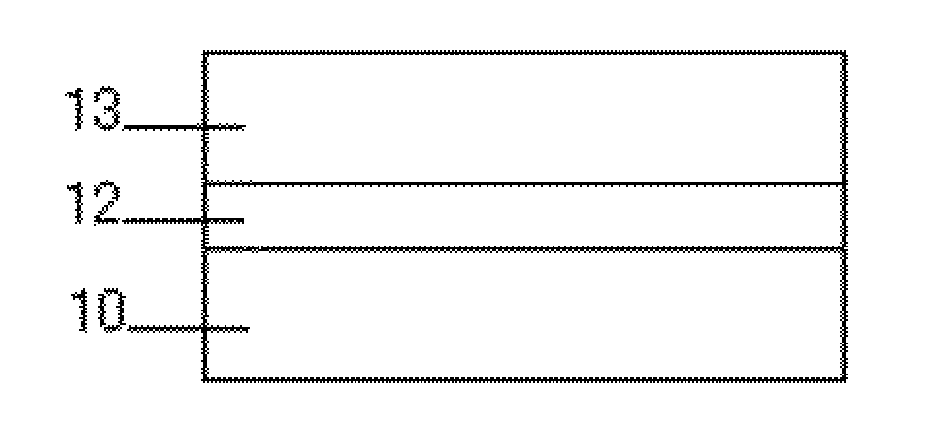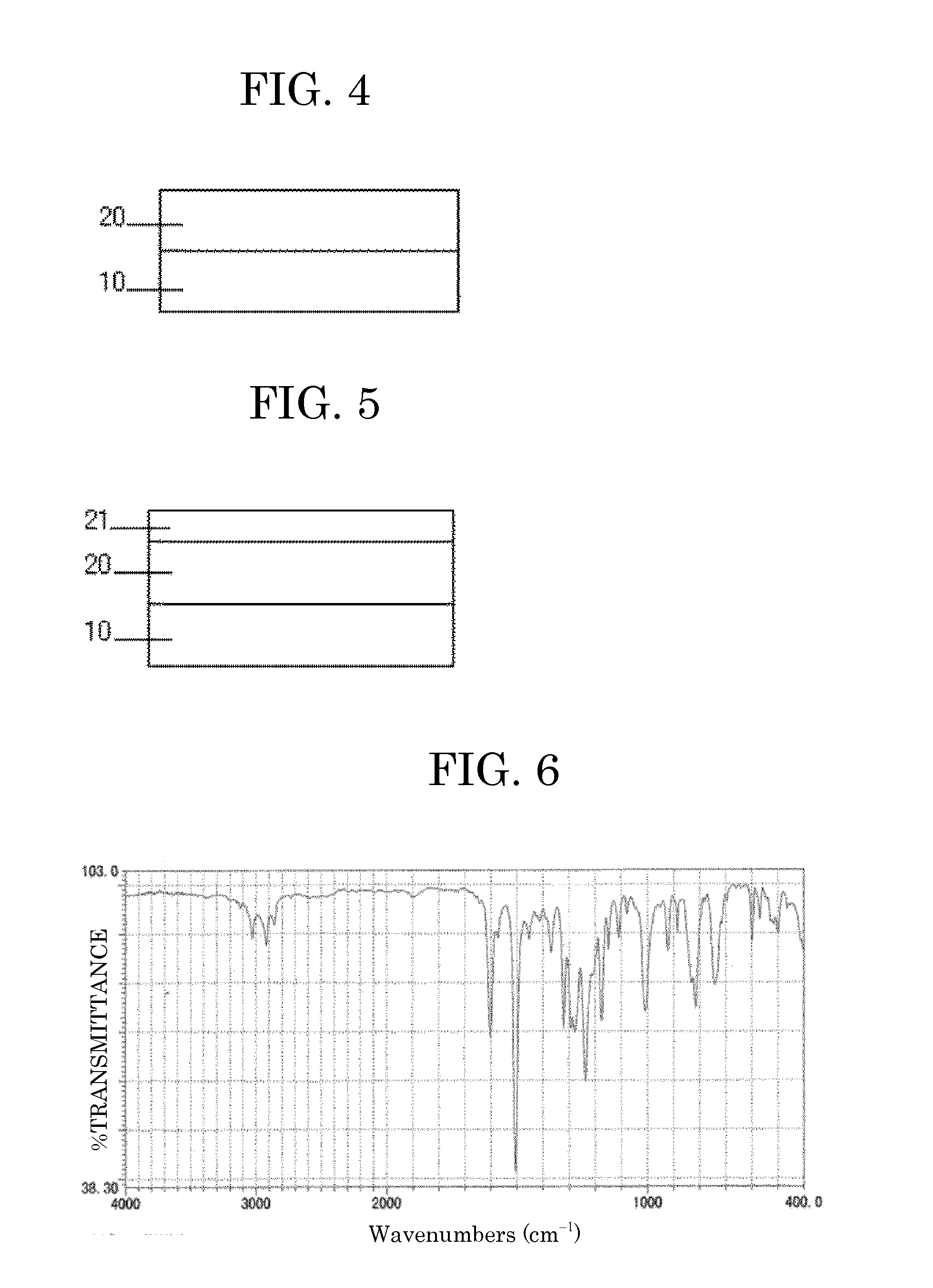Furan derivative and electrophotographic photoconductor
a photoconductor and furan derivative technology, applied in the direction of electrographic process, instruments, corona discharge, etc., can solve the problems of degrading electrical characteristics of obtained crosslinked charge transporting material, lack of thermoplasticity and dissolvability, and inability to recycle cured films, etc., to achieve excellent intrinsic characteristics, low polarity, and high mechanical characteristics and insolubility to solvents
- Summary
- Abstract
- Description
- Claims
- Application Information
AI Technical Summary
Benefits of technology
Problems solved by technology
Method used
Image
Examples
example 1
[0136]A reaction container equipped with a stirrer, a thermometer and a dropping funnel was charged with a diphenol derivative having the following Chemical Formula (10 g), furfuryl alcohol (4.06 g, product of TOKYO CHEMICAL INDUSTRIES Co., Ltd.), tributylphosphine (10.05 g, product of TOKYO CHEMICAL INDUSTRIES Co., Ltd.) and dehydrated dichloromethane (200 mL). Separately, 1,1′-(azodicarbonyl)dipiperidine (12.53 g, product of TOKYO CHEMICAL INDUSTRIES Co., Ltd.) was dissolved in dichloromethane. Under nitrogen flow, the resultant dichloromethane solution (30 mL) was slowly added dropwise to the reaction container at 3° C. The mixture was allowed to react at the same temperature for 10 hours. Thereafter, the reaction mixture was filtrated, and the reaction solvent was removed with an evaporator, to thereby obtain yellow powder as a crude product. In addition, the thus-obtained yellow powder was purified using a silica gel column, to thereby obtain 4.53 g of a furan derivative (Compo...
example 2
[0139]A polyamide resin (CM-8000, product of TORAY INDUSTRIES, INC.) was dissolved in a methanol / butanol solvent mixture. The resultant solution was applied onto an aluminum plate with a doctor blade, and naturally dried to form an intermediate layer of 0.3 μm. Separately, a bisazo compound having the following Chemical Formula (serving as a charge generating compound) was milled in a cyclohexanone / 2-butanone solvent mixture with a ball mill. The resultant dispersion liquid was applied onto the intermediate layer with a doctor blade, and naturally dried to form a charge generation layer having a thickness of 0.5 μm.
[0140]Next, a charge transport layer coating liquid having the following composition was applied onto the above-formed charge generation layer with a doctor blade, and naturally dried. Then, the resultant layer was dried at 130° C. for 30 min to form a charge transport layer having a thickness of 20 nm. Through the above procedure, an electrophotographic photoconductor wa...
example 3
[0149]Similar to Example 2, an intermediate layer and a charge generation layer were formed on an aluminum plate. Next, a charge transport layer coating liquid having the following composition was applied onto with a doctor blade, and then naturally dried. The resultant layer was dried at 80° C. for 8 hours to form a charge transport layer having a thickness of 17 μm. Through the above procedure, a photoconductor was produced.
[Charge Transport Layer Coating Liquid]
[0150]Furan derivative obtained in Example 1 (Compound No. 2): 3 parts
[0151]2,2-Di(2-furyl)propane (product of TOKYO CHEMICAL INDUSTRIES Co., Ltd.): 0.9 parts
[0152]Trismaleimide having the following Structural Formula (obtained according to NPL 1): 2.4 parts
[0153]Dichloromethane: 25.2 parts
[0154]Similar to Example 2, the obtained photoconductor was evaluated for electrical characteristics. The results are shown below.
[0155]Vm=−1,067 V
[0156]V0=−920 V
[0157]E1 / 2=1.68 lux·sec
PUM
| Property | Measurement | Unit |
|---|---|---|
| temperature | aaaaa | aaaaa |
| temperature | aaaaa | aaaaa |
| temperature | aaaaa | aaaaa |
Abstract
Description
Claims
Application Information
 Login to View More
Login to View More - R&D
- Intellectual Property
- Life Sciences
- Materials
- Tech Scout
- Unparalleled Data Quality
- Higher Quality Content
- 60% Fewer Hallucinations
Browse by: Latest US Patents, China's latest patents, Technical Efficacy Thesaurus, Application Domain, Technology Topic, Popular Technical Reports.
© 2025 PatSnap. All rights reserved.Legal|Privacy policy|Modern Slavery Act Transparency Statement|Sitemap|About US| Contact US: help@patsnap.com



